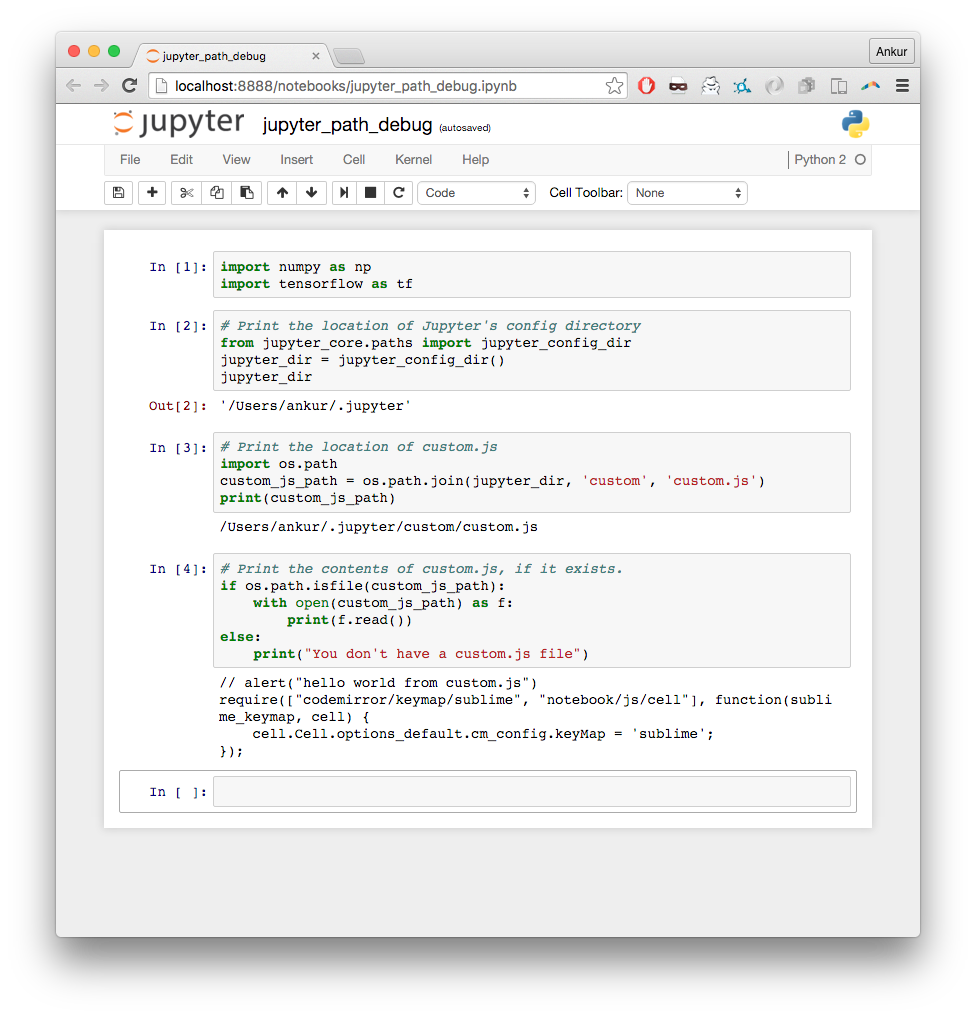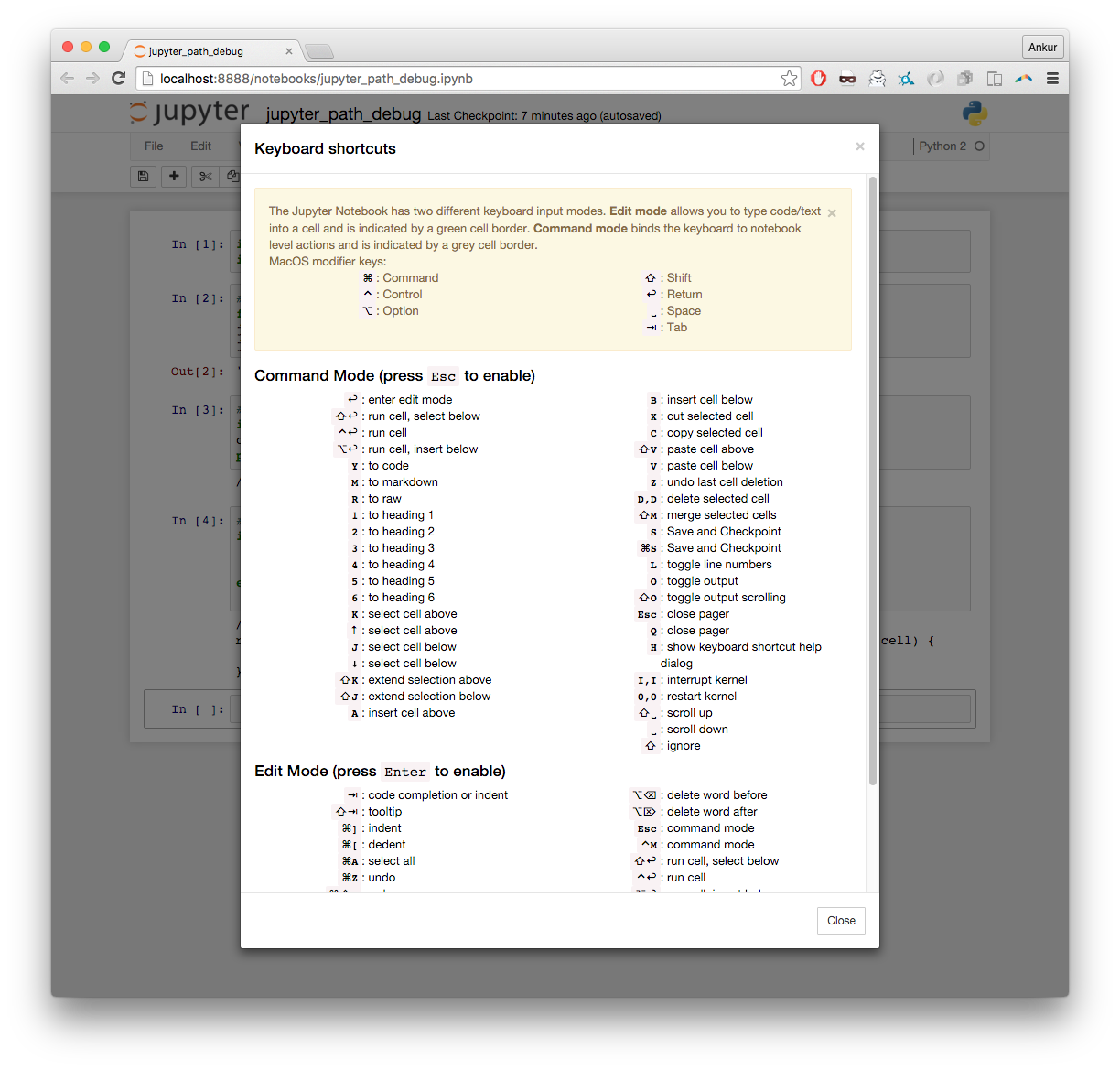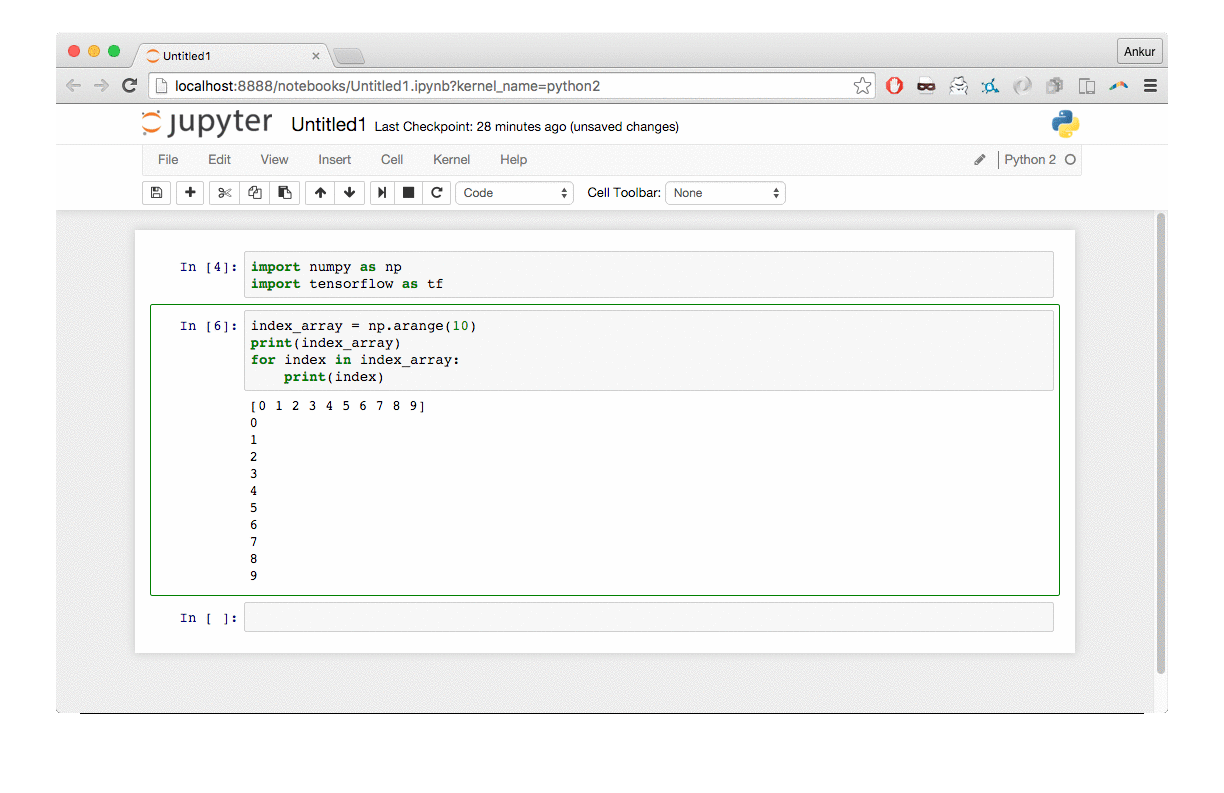Perfectly Random
machine learning, probability, and programmingSublime-style multiple cursors in Jupyter
Jupyter Notebooks
Jupyter Notebooks are great for visualizing and sharing results with others.

Learning the keyboard shortcuts tremendously improves productivity while using Jupyter Notebooks. By default, you can see the keyboard shortcuts help dialog window by first pressing Escape to enter the Command Mode and then pressing h.

While these keyboard shortcuts are very useful, I miss the multiple cursor functionality from Sublime Text. This functionality allows you to select (and then edit) multiple instances of a word visually. This is incredibly useful while coding. Renaming a variable via multiple cursors is easy, safe, and very satisfying. See the Sublime Text homepage or see below for an animated demo.
A Python expert informed me that this functionality was added to Jupyter Notebooks after switching to Code Mirror 4 but it requires setting up a Sublime Text keymap. After searching a bit for instructions to accomplish this task, I found two GitHub issues (this and this) that describe how to do this. After some tinkering, I was able to make this work. I have consolidated these instructions below so it’s easier for others.
(Update: Excitingly, there is an attempt in progress to allow the users to switch keymaps using the “Edit” menu. Until this pull request gets merged and rolled out in a new release, the following instructions would be helpful.)
Overall, this task is simple. To set up a Sublime Text keymap, you need to add a few lines of Javascript to a custom.js file. Setting up a custom.js file for Jupyter Notebook is described in detail here.
Instructions
-
Find the location of
custom.jsfile. On MacOS and Linux, the default location is~/.jupyter/custom/custom.js. If this is your first time setting up acustom.js, this file will probably not exist in that location. Optionally, you can run the following code in a Jupyter Python Notebook to find the location and contents of yourcustom.jsfile :# Print the location of Jupyter's config directory from jupyter_core.paths import jupyter_config_dir jupyter_dir = jupyter_config_dir() print(jupyter_dir) # Print the location of custom.js import os.path custom_js_path = os.path.join(jupyter_dir, 'custom', 'custom.js') print(custom_js_path) # Print the contents of custom.js, if it exists. if os.path.isfile(custom_js_path): with open(custom_js_path) as f: print(f.read()) else: print("You don't have a custom.js file") -
If
custom.jsdoes not exist at the location found in Step 1, create it. As a quick (optional) check that thecustom.jsindeed has an effect, add the following line to it (preferably at the top of the file):alert("hello world from custom.js")Restart Jupyter Notebook server (by pressing
Control+Cin the terminal, if applicable). If everything is working correctly, you should be greeted by a dialog window in your browser after you restart your Jupyter Notebook. -
You can comment out the line you added in Step 2. Add the following lines to your
custom.js(preferably at the top of the file):require(["codemirror/keymap/sublime", "notebook/js/cell"], function(sublime_keymap, cell) { cell.Cell.options_default.cm_config.keyMap = 'sublime'; });Restart Jupyter Notebook again.
-
Test out multiple cursors by selecting some text and then pressing
Control+D(on Linux or Windows) orCommand+D(on MacOS).
